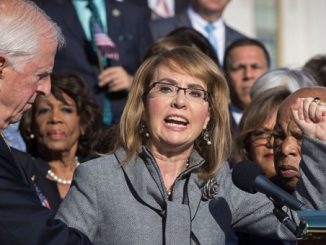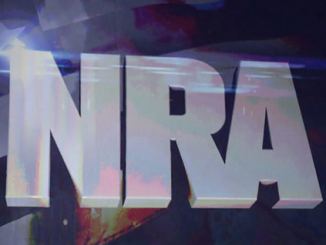
Social justice busybodies obsessed with how other people live their lives often portray the success of their causes as a matter of destiny. “The young people will win,” insists one youthful gun control advocate, falsely portraying his personal crusade as a generational mandate. Yet recent events have demonstrated that bedrock American values – including support for the Second Amendment – tend to outlast moments of high emotion that are increasingly relied upon by political opportunists to advance their agenda. Given the chance to collect their thoughts, most Americans instinctively revert to freedom.
We recently commented on this point with reference to poll numbers that show a familiar pattern of gun control support spiking in the immediate aftermath of an infamous firearm-related crime, only to taper off as the punditry aims its fury in another direction or overplays its hand and is forced to regroup.
Widget not in any sidebars
Since then, additional evidence has arisen to complicate the media’s breathless narrative that “the ground is shifting on gun control.”
First, more recent poll numbers underscore the fact that Americans, including young Americans, recognize that the country has far more pressing problems than rushing to enact unproven gun control measures.
The Associated Press and MTV, for example, teamed up this year to measure the “Youth Political Pulse,” with surveys conducted from late February to early March (when the news cycle was focused on the terrible crime at Marjory Stoneman Douglas High School) and again from late April to early May. Between the survey periods, the percentage of respondents aged 15 to 34 who identified firearm-related issues as their highest concern for the country fell 15 points, from 21% to 6%. During the earlier survey period, the gun issue was the highest concern. In the latter period, it was tied for the sixth most common response, behind the economy, social inequality, and even threat of nuclear war.
Moreover, a week after a similar crime in Santa Fe, Texas on May 18, support for gun control in the Lone Star State had actually dropped 6% since April, as measured by Quinnipiac University polling. Support for stricter gun laws was also lower in the May sample among those aged 18 to 34 than among those 65 or older, another inversion of the conventional wisdom that youth are destined to change the national debate on this question. A Quinnipiac analyst opined: “The tragedy at the Santa Fe school south of Houston changed few opinions among Texas voters about gun control. Support for gun control in general is down slightly, while support for background checks for all gun buyers is virtually unchanged.”
Adding to the gun control advocates’ woes were the release of data and studies that contradicted their claims of a rising epidemic of school shootings fueled by easy access to so-called “assault weapons.”
The website The74Million.org, which describes itself as a “non-profit, non-partisan news site covering education in America,” published a lengthy interview in May with Criminologist Nadine Connell of the University of Texas at Dallas, who’s compiling a database of every school shooting since 1990. The piece underscored Connell’s findings that “school shootings are extremely rare” and that allowing them to drive policy isn’t “always the most productive” way to keep students safe.
Connell indicated that “from the perspective of policymaking,” the media’s current reporting on school shootings can be misleading. “[A]s of now,” she said, “we don’t think there is an increase in the number of incidents as much as there is an increase in the attention to the incidents.” She also stressed that “the number of rampage-like incidents remains extremely low, and they are a relatively small subsection of the shootings we are analyzing.” Schools, Connell said, “are the safest they’ve ever been.”
While Connell indicated in the interview that she is not a fan of arming teachers, she also declined to put gun control at the center of the debate. When asked what would be the “most effective method to stop the lion’s share of the problem,” she emphasized “whole-school-centered approaches to improve climate, clarify expectations, and support teachers and administrators in creating a community of trust and support.” She also noted that the “environmental design” of schools can play an important role in keeping kids safe without making them feel like they are under siege.
Perhaps more even more ironic was a May 22 report from the Rockefeller Institute that was funded by a multi-state “Regional Gun Violence Research Consortium” representing a who’s-who of Northeastern antigun jurisdictions. Entitled “Can Mass Shootings be Stopped?” the report broadly focuses on mass shootings in general, rather than on school-specific events.
Like Connell, however, the authors mentioned media distortion as an impediment to understanding the true nature of the problem. “Mass shootings, and those that are particularly lethal, are amplified by the news cycle, making them appear more commonplace when they are, in fact, statistically rare,” they stated. They also characterized the media’s coverage of the events as “unbalanced,” potentially leading the public to “hold disproportional attitudes about the events themselves.”
Widget not in any sidebars
The report made the points that mass shootings are not limited to the U.S. but “occur in countries worldwide,” are nearly three times more likely to be perpetrated with handguns than with “assault weapons,” and occur more frequently in workplaces than in schools. Also likely to displease its funders is the report’s observation that gun control laws, whether passed in the immediate wake of a mass shooting or kept on the books for decades “often are not enforced, leading them to be ineffective at preventing the next mass shooting.” But perhaps most damning of all was the authors’ admonition that “[k]nee-jerk reactions rooted in emotion will not solve the problem.”
Yet that is exactly how gun control advocates operate and what they offer. Whatever can be said about the youthful gun control activists who have captured so much of the media’s attention lately, they are among the prime purveyors of emotionalism and hyperbole. And far from bringing innovative new thinking to the issue, their main “solution” is the tired notion of banning guns that are underrepresented in rampage gun crimes and remain highly popular among the law-abiding. Instead of treating every word out of their mouths as some new game-changing revelation, their gun control seniors should remind them that “assault weapon” bans had until recently been de-emphasized as an embarrassment to the movement and too obvious of its prohibitory intent.
Unlike the latest gun control hashtag or self-congratulatory Hollywood vanity project, the National Rifle Association has been around since 1871. We’ve seen movements come, and we’ve seen movements go. And while we never doubt the sincerity of our opposition in their desire to eradicate the right to keep and bear arms, we’re not about to change our values or objectives just because some media talking heads or youth-obsessed celebrities begin making demands or throwing around half-baked claims.
Fortunately, the American commitment to freedom also remains strong and resilient. And freedom-loving Americans know they have an ally in the NRA.







Be the first to comment